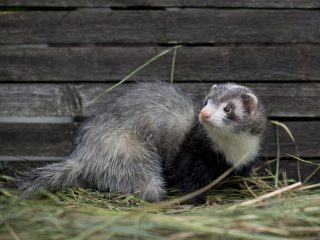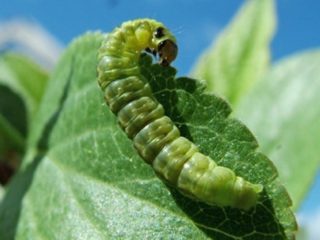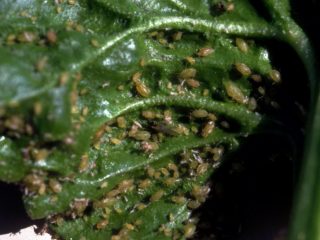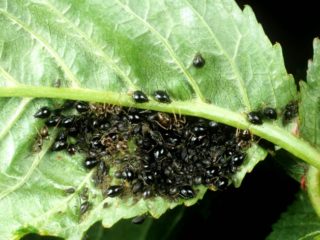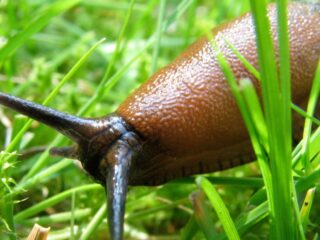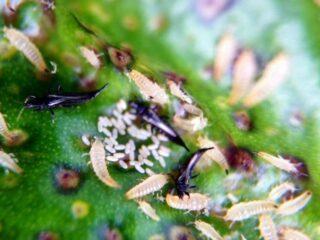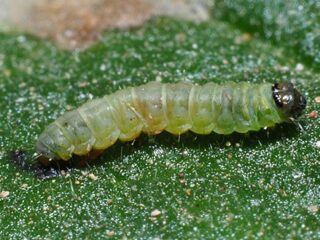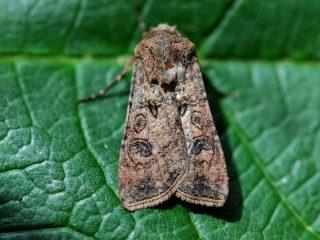Content
Young linden trees are most vulnerable to diseases and pests. This applies to a greater extent to seedlings located along the routes. Automotive fumes weaken wood. Immunity develops with age, and while the plant is young, it needs supervision. Growths on linden leaves are a common case.
What it is
When strange formations appear on the foliage, many wonder what it is and what it might be connected with. Red growths indicate that the linden tree is infested with gall mites. Something like warts appear on the shoots. The insect appears on different varieties, most often on large-leaved linden.

Favorable conditions for the formation of growths are an excess of phosphorus elements and dense seedlings
Galls feed on plant sap, causing leaf cell depletion. The growths serve them as something like nests. It is there that the pest multiplies and lays larvae. Red formations also appear on other trees.
The growths spread across the surface of the leaves at an impressive rate as the mite produces large offspring. As a result, the entire linden tree is covered with red cells.The health of the crop will depend on the determination of the gardener and which control method he chooses.
Signs of a leaf gall mite
Formations on linden leaves are the main sign of a mite. But it is better not to let this happen, since the plant is under enormous stress. You need to act when the galls have just settled on the leaves. In this case, it is difficult to recognize the pest; it has not yet had time to lay larvae and form nests.
Initially, the leaves turn yellow - they lose chlorophyll. Sometimes the plates are destroyed and colorless growths appear. Over time, they increase in volume and become red.
Fighting red growths on linden leaves
To help the linden tree cope with the gall mite on the leaves, urgent measures need to be taken. The tree is treated with chemical or folk remedies. Moreover, you should act before the formation of growths.
Warts appear towards mid to late summer. Ticks become active in May or June, depending on the outside temperature. During these months it is necessary to use medications. Insects don't like cold.

The parasite can leave offspring in the bark of a tree to survive the winter
When choosing a method, you need to know that the treatment must be comprehensive. That is, to combine different means of struggle. This is due to the high adaptability of the tick. Using only one drug, the owner may not be able to get rid of the parasite.
Chemicals
The easiest way to deal with growths on linden leaves is with chemicals.This includes substances with systemic action. Spraying is carried out frequently, with a minimum pause. The following tools will help with this:
- "Apollo"
- "Karate Zeon";
- "Fitoverm";
- "Acrex";
- "Ditox"
- "Karbofos".
Linden leaves are processed several times a season. In this case, the toxicity of the substance is taken into account. Prolonged use of chemicals can have negative effects. If a gardener sprays an agricultural plant, the fruits should be consumed 15-20 days after spraying.

"Fitoverm" is the most popular product among Russian gardeners and gardeners
Leaves are not collected so as not to accidentally spread the growths. When the galls are exterminated, the shoots can be thrown away. Do not spray garden crops that have begun to bloom. In this case, folk remedies are used.
Red warts on linden leaves are resilient. Treatment with the same drug for a month will give a bad result. The number of galls will decrease, but the parasite will remain. With prolonged contact, the insect produces immune cells.
Traditional methods
In addition to processing, you should turn to traditional methods. They involve removing infected leaves. The work is carried out when growths have already appeared on the linden tree. Red shoots should be cut off if there are few of them. The tree should not be left bare.
This method does not always give results, since the galls multiply quickly. To deal with the pest, you can attract a natural predator. Experienced gardeners advise releasing ichneumon wasps into the garden. Tick larvae are a delicacy for them. As a result, the area is quickly cleared of parasites.

Thick branches are easier to trim with a power saw than with a hand tool.
As for injections, they should not be administered independently, especially for beginners. It is better to consult with botanists - the process is very complicated. The result is not always positive.
Processing rules
The substance must be selected correctly so as not to attract other pests - spider mites, aphids. The use of the wrong drug also threatens to worsen the condition of the linden tree, its leaves and roots. Therefore, before processing, you should consult an experienced gardener.
To prepare the solution, follow the instructions. Using a spray bottle, spray the linden tree, including not only affected, but also healthy leaves without growths. You need to understand that infected shoots cannot be returned. It is better to tear off severely damaged parts immediately. But you shouldn’t overdo it either - the number of leaves removed should be within 10-15%. The remaining shoots are sprayed.
Preventive measures
To prevent growths from appearing on linden leaves, you need to follow preventive measures. They consist of regular treatment with chemicals. Spray before or during the opening of the buds so that the tick does not even have time to look at the place. In this case, the insect will not be able to infect the linden tree.
If the gardener notices the threat too late, the fallen leaves are burned. In addition to the growths, they contain parasite larvae that will soon hatch. Therefore, make a fire, preferably outside the site, and burn the infected vegetation.

If a pear or apple tree grows next to a linden tree, the tick can infect them too
Linden needs feeding, which should not be forgotten. The tree's immunity depends on this. Fertilizers are applied at different intervals. It all depends on the nature of the soil, the timing of the previous fertilizing, and varietal characteristics.
Dry and non-viable leaves are cut off. Scheduled treatment is carried out twice a year. This will avoid the appearance of growths in any season. Using systemic remedies, the owner will also prevent damage from other insects. Spray in spring and autumn, when there are no growths and the tick is open.
The gall mite is not dangerous to animals or humans. It feeds only on plant juice. An infected tree loses its immunity, begins to get sick and wither. This type of linden cannot be used for medicinal preparations.
Only regular inspection and preventive measures can protect the plant from the appearance of growths. To keep the leaves healthy, do not forget about the importance of fertilizing, proper watering and sanitary pruning.
Conclusion
Growths on linden leaves are formed as a result of gall mite infestation. You can recognize the presence of the parasite by yellow leaves. Red formations appear after active reproduction. Galls are dealt with using chemical and folk remedies. Experienced gardeners combine methods with each other, alternate preparations, and do not forget about preventive measures.

